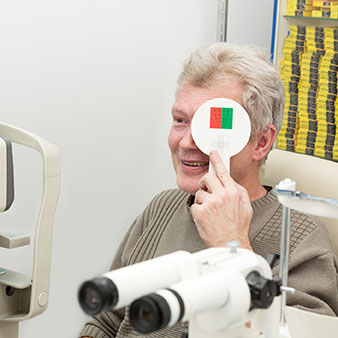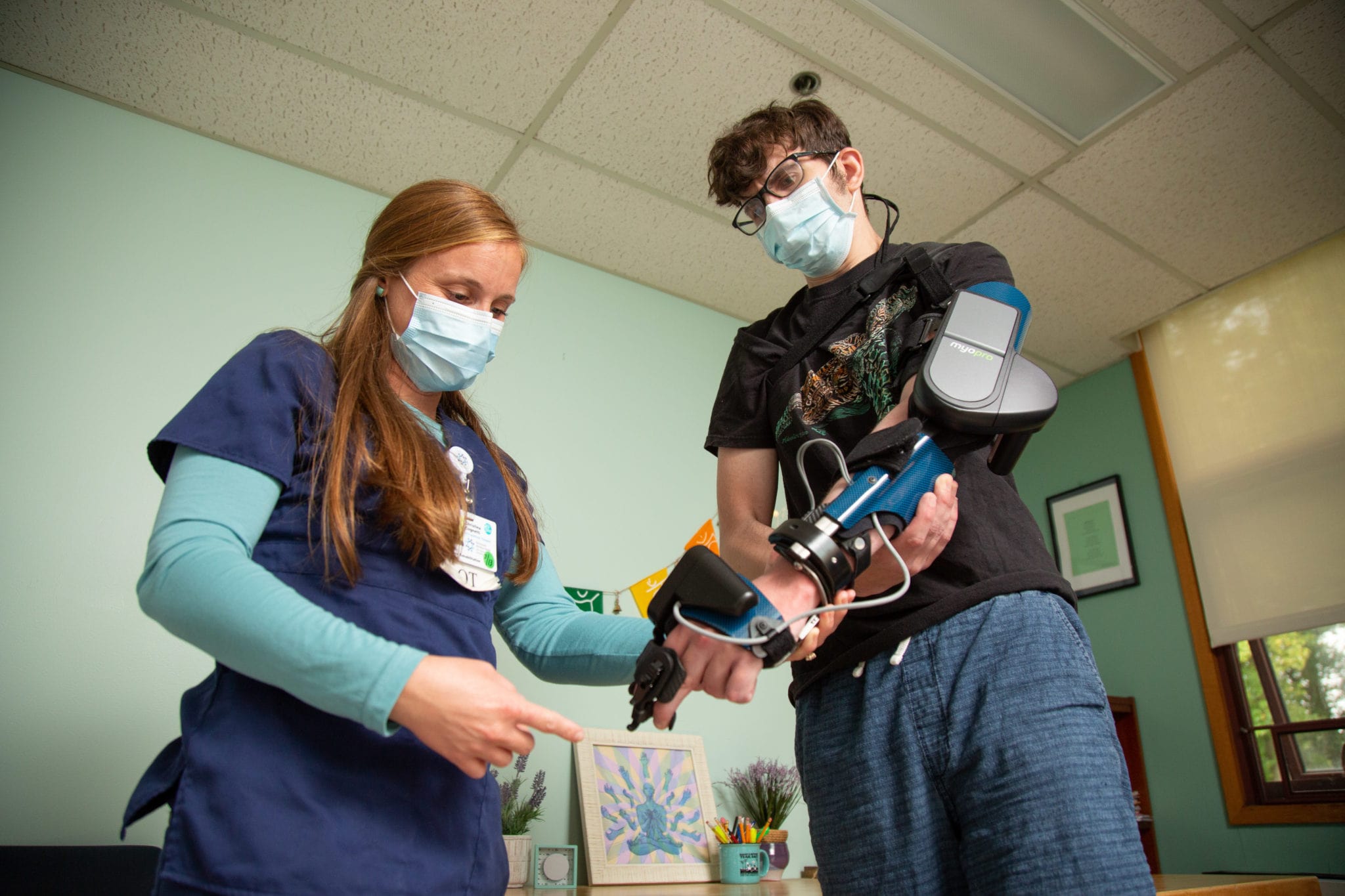Stroke of Luck

August 26, 2021
It was a hot—90-plus-degrees hot—and humid day in July 2019 when Gary Rumpf, a funeral home owner and director, decided to get his only form of exercise for the day: mowing the lawn.
At home by himself after church, the former volunteer firefighter and high school football player declared to himself that despite the heat, he was going to “get this done,” figuring he could break up the chore by taking dips in the swimming pool if he needed to cool off.
He walked out to his garage, filled his mower with gas, rolled it to his lawn, grabbed the pulley handle and yanked hard. The mower started on the first pull, and Gary thought to himself, “This is my lucky day!”
As it turned out, it was his lucky day.
In the Nick of Time
Halfway through mowing the lawn, Gary felt an odd sensation: a flushing feeling from his left ankle up the left side of his body. He didn’t know what was happening, but when he found himself dragging his left leg, he knew whatever was going on with him wasn’t good. He struggled to finish the section of lawn he was mowing before calling it quits. The moment he took his hands off the mower’s handle, he hit the ground.
He managed to pull himself into his air-conditioned home and downed an aspirin with a glass of cold water. No one else was there, but when his wife, Joan, walked in the door a short time later, she insisted he go to nearby Raritan Bay Medical Center-Perth Amboy. He refused. She called in reinforcements in the form of their daughter, who lives nearby.
Realizing he couldn’t feel anything on his left side, he finally agreed to go. Some four hours after he felt that flush, he arrived at the Emergency Department, where Mark Niemiera, M.D., ordered a number of tests, including a CT scan and an MRI.
“The MRI showed that Gary had an acute right thalamocapsular lacunar infarct, which is a stroke caused by a blockage that affects the vessels connected to the thalamus, a brain structure involved with functions such as speech, memory, balance and sensation,” Dr. Niemiera says. “It was vital for us to recognize the stroke quickly, especially given the amount of time that had already passed.”
Lacunar strokes, which account for one-fifth of all strokes, are frequently caused by chronic high blood pressure—just one of the conditions Gary has that put him at risk for stroke. He also has diabetes, high cholesterol and atrial fibrillation.
The atrial fibrillation most likely caused his stroke, says Eric Uhrik, D.O., FAAN, the neurologist who was part of Raritan Bay’s Emergency Department on-call stroke team when Gary arrived at the hospital. “Uncontrolled and untreated atrial fibrillation [a-fib] can cause blood clots to shoot to the arteries of the brain, causing blockages to blood flow to the brain tissue,” Dr. Uhrik says. Gary was in the midst of changing the medication used to treat and control his a-fib when he had his stroke.
Once Gary’s stroke had been diagnosed, a multidisciplinary team including doctors, physical therapists, occupational therapists, nurses and radiologists worked together to create a treatment plan that would yield the best restorative outcome possible.
Occupational and physical therapy began immediately at his bedside. “They did not let me lose anything more and tried to rebuild on my function right when it happened,” Gary says. “I’m so appreciative of what they did there.”
Tremendous Care
Once Gary was medically stable, he was transferred to JFK Johnson Rehabilitation Institute for a week of in-patient rehabilitation. Overseeing Gary’s care there was Iqbal Jafri, M.D., medical director for the Center for Cardiac and Pulmonary Rehabilitation.
“When he arrived here, Gary was experiencing numbness and weakness, and had difficulty walking,” Dr. Jafri says. “After a week of intense rehabilitation, he was able to walk independently again. He was independent in self-care, as well.”
After Gary completed inpatient rehabilitation, he returned to Raritan Bay for 30 days of outpatient therapy. He says the care he received at both locations was “tremendous.”
Today, he still has a bit of a drag with his left leg and he sometimes forgets words, but he is back to reduced hours at the funeral home and calls himself “blessed” even if he doesn’t progress further.
“I am appreciative that I don’t have permanent paralysis either in that arm or leg, or my face drooping down. I don’t dribble anymore,” he says. “I can’t thank the hospital enough for what they did.”
The material provided through HealthU is intended to be used as general information only and should not replace the advice of your physician. Always consult your physician for individual care.
Find a doctor near me
What Cancers Can Be Caused By HPV?

Learn about HPV-related cancers. Understand risks & prevention. Protect your health. Schedule a checkup today.
What is Vision Therapy—and How Does it Help?

Improve vision & quality of life with vision therapy. Treat blurry vision, eye strain, and more. Learn how vision therapy can help you.
Find a doctor near me

Tinnitus Patient Finally Finds Peace and Quiet
Find lasting tinnitus relief. Anna Callahan overcame constant ringing with innovative treatments at JFK Johnson Rehabilitation Institute. Learn how to manage your tinnitus today.

25-year-old Man on the Road to Recovery After a Debilitative Brain Injury
Brain injury recovery story: 25-year-old Michael's journey to regaining independence after a debilitating injury at Jersey Shore University Medical Center and JFK Johnson Rehabilitation Institute. Learn more.

